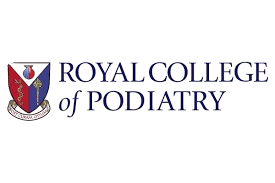Podogo by The London Foot Clinic
A specialist central London podiatry clinic, striving to provide a high quality and tailored service to all our patients
Contact us
Recognised by












Leading Podiatry Care in Central London
About Podogo
Podogo is a premier podiatry clinic located in the heart of London’s historic medical district. Our team of HCPC registered specialists delivers exceptional foot care services using state-of-the-art technology and evidence-based treatments.
- HCPC Registered Specialists
- Advanced MRI Scanning
- Comprehensive Diagnostics
- One-Stop Service
Our Services Include the Following

Podiatry
Our podiatrists assist with treatment for foot issues such as corns, ingrown toenail surgery and verruca removal.

Gait Analysis
Our specialist podiatrist offers a thorough gait analysis and biomechanical assessment to assess for issues such as plantar fasciitis, recurrent ankle injuries and flat foot.

Foot Sports Injuries
Sports injuries can affect professionals and beginners, our foot and ankle specialists assist with minor sprains to recurrent ankle injuries.

Orthotics
Our specialised custom orthotics are designed to each of our patients needs. Whether you are looking for non surgical options for a bunion, support to your flat foot or realignment of the ankle position, our gait analysis and orthotics specialists can assist.

Foot and Ankle Surgery
For individuals seeking a surgical solution to a foot or ankle issue, our consultant Mr Kaser Nazir provides a tailored surgical plan to all of our patients, surgeries ranging between bunion correction to achilles tendon repair.
Our Team Members
Our foot and ankle specialists assist with a range of issues. If you need advice on which specialist is most appropriate to assist with your issue, reach out to our admin team today who would be happy to take the time to discuss your individual needs.
Blog

Hammer, Claw, and
Hammer, Claw, and Mallet Toes-Explore the Differences Hammer, claw, and...

Ingrown Toenails and Footwear: Tips for
Ingrown Toenails and Footwear: Tips for Choosing the Right Shoes An ingrown toenail can be...

Top Reasons to Visit a Podiatry Clinic: Caring
Top Reasons to Visit a Podiatry Clinic: Caring for Your Feet One of the advantages...
Stories from Our Customers
Trustindex verifies that the original source of the review is Google. I met Mr Kaser Nazir and his team over a year ago. Since then, I had two bunion corrections and a Morton's Neuroma removal from my right foot. I received excellent care from Mr Nazir and his team during and after the operations. Fiona's organisational skills are second to none. Mr Thomas is kind and very understanding. The team's caring, ever-so-understanding and helpful attitude cannot be praised enough. I highly recommend Mr Kaser Nazir and Mr Steven Thomas.Trustindex verifies that the original source of the review is Google. David was wonderful - very kind, knowledgeable and diligent. I had a severe ingrown toenail removed and he talked me through the whole procedure, helpful at all stages before during and after.Trustindex verifies that the original source of the review is Google. I saw Stephen Thomas about capsulitis in my metatarsal joints. He wasn’t able to help me at all, which is surprising at the high price. Whilst he sold me some expensive orthotics/insoles, they didn’t help at all after several months. He never pushed for ultrasound to get a proper diagnosis or had any ideas except modifying the insoles. On top of this, he said the orthotics would last 2 years and they wore out after six months. I’ve since seen a better podiatrist whose toe strengthening program has actually fixed my issue. He’s a lovely guy, but I’m really not sure about his approach. I guess when you have a hammer (insoles), everything looks like a nail.Trustindex verifies that the original source of the review is Google. What I love most about my new orthodics from Podogo is that the slim shape means I can place them into all my shoes. They also support my feet in all the right places. My only regret is not purchasing them earlier!Trustindex verifies that the original source of the review is Google. I had been suffering with pain in my foot and knee while walking. After conducting a gait analysis, Steven Thomas identified a need for orthotics to unlock my big toe. The custom orthotics were crafted and fitted within 2 weeks of my appointment and have helped resolve my issues. I was particularly pleased with the flexible clinic hours and the technology present at the clinic along with the helpful manner of all the staff.Trustindex verifies that the original source of the review is Google. I had quite painful bunions, but I'm 17 and was told by a few people not to have surgery. However, I finally decided to remove one of them after going to Dr Nazir. Everything went absolutely fine- would definitely recommend just getting it done. It hurts so much less than you think and only for about 2 days after the operation. You're on crutches for about three weeks, but moving around completely normally after that. My physio was very impressed with the surgery and I'll be having the other one done at some point. 100% worth it!Trustindex verifies that the original source of the review is Google. Got personal orthotics made for my feet! What a great experience! The whole team was so professional and friendly. They listened to all my questions and concerns about my foot health and issues. My new orthotics are great and have really helped with the pain I was experiencing and has also improved my overall posture ! Thanks Podogo !Trustindex verifies that the original source of the review is Google. We came to see Dr Nazir for my mom’s heel pain. He diagnosed her plantar fasciitis and explained all the treatment options with their side effects and his recommendations very well. She has had two treatments so far and is almost pain free already. His team is very efficient and supportive and doctor Nazir himself is extremely professional and knowledgable. Thanks Podogo!!Trustindex verifies that the original source of the review is Google. I recently had my bilateral bunion surgery with Mr Kaser Nazir and couldn't be more pleased with the results. I hardly experienced any pain following the procedure, and have had a smooth recovery following Mr Nazir's advice. The rest of staff who have looked after me at the clinic during my follow-up appointments have been brilliant too. I will definitely recommend Mr Nazir's for any foot condition.Trustindex verifies that the original source of the review is Google. While skiing, this year, I suffered from bad knee pains and foot cramps. A specialist at the resort recommended a trip to PODOGO by The London Foot Clinic. I visited the team and they quickly diagnosed flat feet and recommended a pair of custom made orthotics. I have been using the orthotics for around 2 months now have I’ve experienced marked improvement in pain when playing sports. They will be top of the packing list for my next skiing trip. I would recommend PODOGO by The London Foot Clinic to anyone experiencing foot or knee pain during physical activities.
Get Relief
When you are looking for relief from pain, solutions to foot and ankle conditions, compassionate diabetic foot care management, or a luxurious medical-grade pedicure, it is all here at Podogo Foot Clinic. Book an appointment today at 17 Harley Street!



